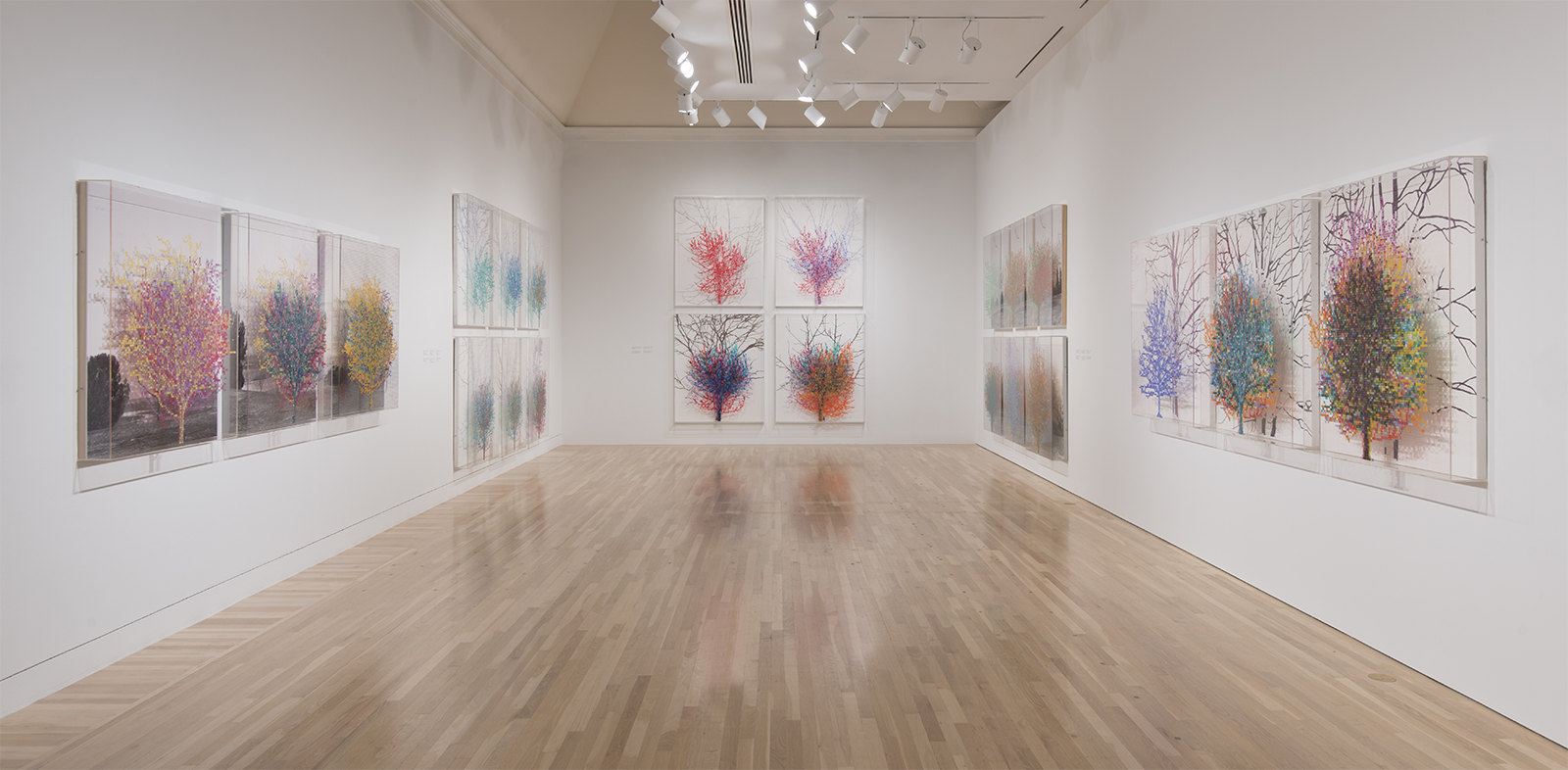Art Exhibit Review: ‘Charles Gaines: Gridwork 1974-1989’

(Courtesy of Brian Forrest)
By Maryrose Kulick
March 4, 2015 1:38 a.m.
“Charles Gaines: Gridwork 1974-1989”
Charles Gaines
UCLA Hammer Museum
4.0 paws
From a distance, mounted frames appear to contain simple sketches of walnut trees. However, upon closer inspection, the shapes of the limbs and branches reveal themselves to be comprised of tiny hand-written numbers filling the blocks of a grid.
On view at the UCLA Hammer Museum until May 24, “Charles Gaines: Gridwork 1974-1989” showcases a series of works that emanate simplicity, but in actuality, are put together with great attention to detail. Out of the nearly 80 works on display, Gaines’ subject matter encompasses everything from trees to people to geometric shapes, all of which employ the grid method in their production.
The grid method is generally a technique utilized by budding artists – first, a grid is drawn over a preexisting image or photograph and then on a separate sheet of paper. By doing so, the artist is able to more accurately transcribe the image square-by-square within the grid. It is a systematic approach to sketching, and “systematic” is precisely the quality that radiates from Gaines’ works, but in a highly refined and thoughtful way.
“Regression,” a series of simple panels that resemble statistical data charts, showcases Gaines’ first use of gridwork. Numbers are written in each square of a grid to create a sideways bell curve, juxtaposing complex arithmetic procedures with visual aesthetics. The rest of the works that follow mimic the same technique, while becoming all the more innovative and creative as time goes on.
“Color Regression” plots different shapes – triangles, squares and rectangles – on a grid with red, green, yellow and blue numbers. While the popping colors matched with simplistic geometric shapes is somewhat reminiscent of a child’s paint-by-number kit, the context in which Gaines’ subject matter is portrayed is far more sophisticated in its execution.
As Gaines moves forward with his gridwork throughout the exhibit, he begins to utilize more organic shapes, such as people and trees, in order to question the influence of subjectivity and imagination in art. In “Walnut Tree Orchard,” he incorporates black-and-white tree photography along with the respective gridding to juxtapose reality with the artist’s interpretation. The framed panels are comprised of four sets of nine images that follow a linear pattern. Adjacent to each photograph is a sketch of the individual tree on a grid, followed by the numerical plotting of its silhouette. As each set progresses, the numerical plot incorporates each preceding tree, superimposing the shape of the plotted numbers, which, by the end, merges all 12 individual trees into one image.
In this way, Gaines comments on the difficult task art undertakes in portraying common images when there is an infinite amount of ways to interpret different shapes and images. Through this series and other portions of the exhibit, the artist attempts to create objectivity within a traditionally subjective medium of expression.
Likewise, in other parts of the collection, Gaines plays with the limitations of still art, particularly in its ability to depict a moving image. This is especially exemplified in “Motion: Trisha Brown Dance,” which also utilizes photography in attempting to plot movement on the grid.
In the production of this piece, Gaines photographed a dancer, choosing to plot the photographs into a grid that incorporates a bit of a blur in the image in order to indicate movement. By mapping the dancer’s movements into a series of grids, he suggests that a problem exists within still art – it cannot accurately display physical processes as they exist in everyday life.
Although “Gridwork” functions heavily as a critique of the freedom of subjectivity in art, it provides a provocative viewpoint of the relationship of art with science. The series “Numbers and Trees” stands out as one of the most vibrant and colorful components of the collection and speaks to a harmonic symbiosis between the order of objectivity and the creative imagination of artists.
Photographs or drawings of trees serve as the backdrop of each piece, with a sheet of glass overlaying the image. A grid is drawn on the glass, and each square corresponding to the shape of the tree is filled with a number and brightly colored acrylic paint, creating an aesthetically alluring pixelated effect.
The merging of science and art across the spectrum of Gaines’ “Gridwork” collection has made way for a new innovative outlet, in which two traditionally opposite mediums can come together to make visually stunning statements in regards to expression.
– Maryrose Kulick


